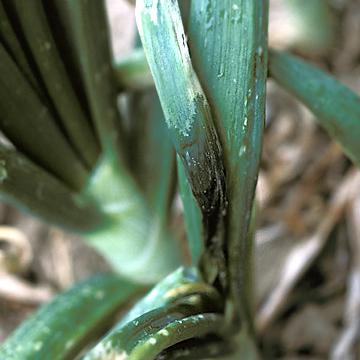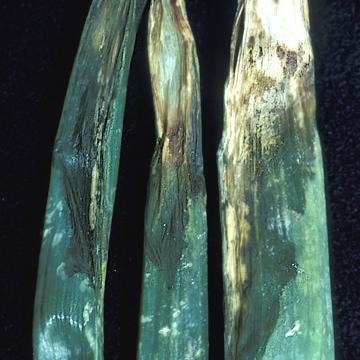DISEASE: Bacterial flower stalk and leaf necrosis
HOST: Onion
Dark, rotted areas of stalk and leaves caused by systemic invasion of the pathogen.
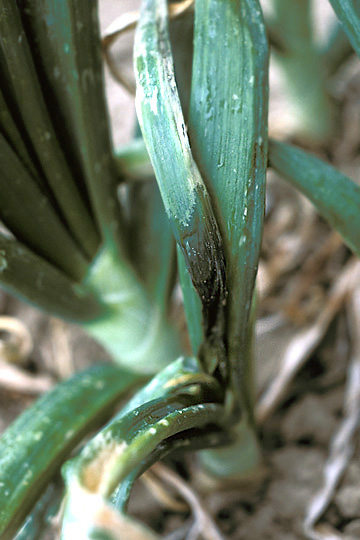
Bacterial flower stalk and leaf necrosis | Onion
DISEASE: Bacterial flower stalk and leaf necrosis
HOST: Onion (Allium cepa)
PATHOGEN: Pseudomonas marginalis pv. marginalis
SOURCE: S. Mohan
DISEASE: Bacterial flower stalk and leaf necrosis
HOST: Onion
Gray-brown rot of onion after inoculation. Disease starts as small, water-soaked lesions that later develop into slimy, gray-brown rot. The disease progresses downward from the stalk and may rot the entire bulb.
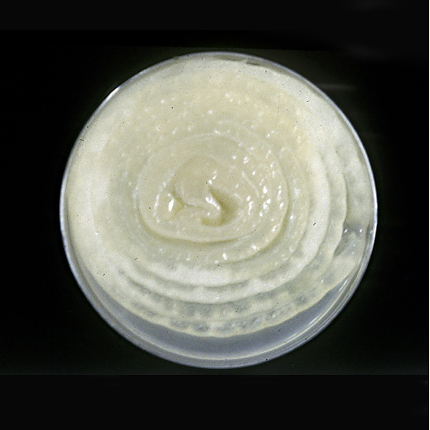
Bacterial flower stalk and leaf necrosis | Onion
DISEASE: Bacterial flower stalk and leaf necrosis
HOST: Onion (Allium cepa)
PATHOGEN: Pseudomonas marginalis pv. marginalis
SOURCE: R. Gitaitis
DISEASE: Bacterial flower stalk and leaf necrosis
HOST: Onion
Leaves with necrosis and rot. The common name for this disease is the same as those used for two other diseases. Also, another common name for this disease is bacterial soft rot.
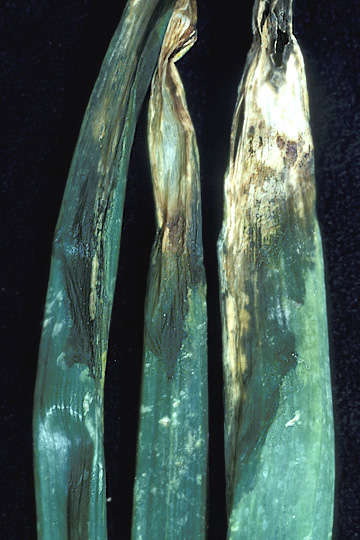
Bacterial flower stalk and leaf necrosis | Onion
DISEASE: Bacterial flower stalk and leaf necrosis
HOST: Onion (Allium cepa)
PATHOGEN: Pseudomonas marginalis pv. marginalis
SOURCE: S. Mohan
DISEASE: Bermudagrass white leaf
HOST: Grass
White leaf disease of bermudagrass.

Bermudagrass white leaf | Grass
DISEASE: Bermudagrass white leaf
HOST: Grass (Cynodon transvaalensis)
PATHOGEN: 'Candidatus Phytoplasma cynodontis'
PATHOGEN SYNONYM: Phytoplasma Bermuda white leaf group
SOURCE: M. Davis
DISEASE: Western wetwood
HOST: Elm
Spokelike, discolored extensions that expanded into sapwood, following an injection with a fungicide. The causal agent is not known but symptoms are associated with bacteria and yeast.

Western wetwood | Elm
DISEASE: Western wetwood
HOST: Elm (Ulmus americana)
PATHOGEN: Causal agent unknown
SOURCE: W. Sinclair


